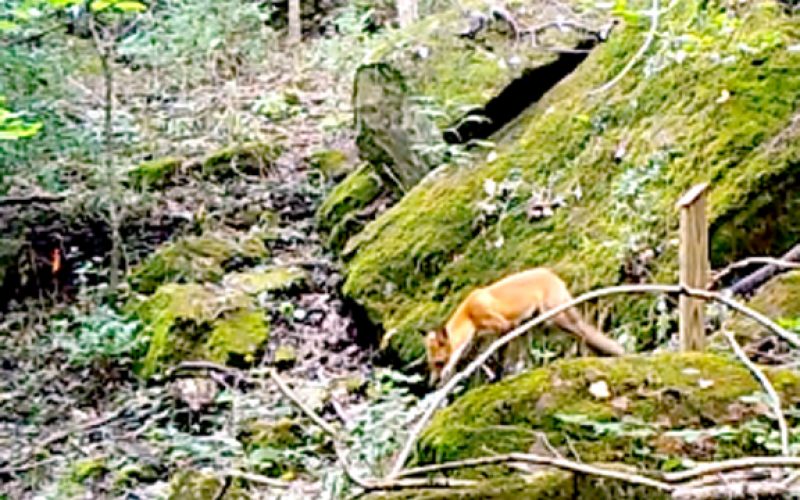
Courtesy of NWA Land Trust
A red fox explores an area protected by the Northwest Arkansas Land Trust in Fayetteville. This image was captured on their trail camera
The Red Fox (Vulpes vulpes) may be working a little bit of magic in Northwest Arkansas and around the world as the most widespread species of fox as well as the carnivorous mammal with the largest range, spanning the Northern Hemisphere. J.K. Rowling’s “Fantastic Beasts and Where to Find Them” is one week away from release, but there has always been natural magic in a species as mysterious as the fox.
With about 45 subspecies of red fox, they have beautifully diverse coloration in their coats. It’s possible to confuse different species of fox due to the range of fur colors. And despite being definite dogs or members of the canid family, they have cat-like vertical pupils and can retract their claws.
Recently, scientists have discovered more to unveil the inner workings of a fox’s astounding ability to perceive the Earth’s magnetic field, and use it to hunt for unseen rodents. This ability helps increase their accuracy with each pounce towards prey which is north of the fox’s body. According to Phys.org, a science site, “A total of 84 wild red foxes were observed in 65 locations in the Czech Republic by 23 wildlife biologists and hunters between April 2008 and September 2010. The observations were made in different seasons and habitats and different times of day. The researchers found that the foxes tended to prepare for their jumps in long vegetation or snow with their body aligned in a roughly north-easterly direction (around 20° clockwise from magnetic north).” Their success rate rises from 18 percent to 73 percent if they align themselves with the Earth’s magnetic field.
The BBC explains that a fox’s exceptional hearing is only part of the process of hunting in deep snow or tall vegetation. They can rotate their ears 150 degrees and use over a dozen muscles to position the ear canal to identify a sound, but they may also use a protein in their eyes called cryptochrome. Scientists speculate that this protein may enable foxes to see the magnetic field as a patchy part of their normal vision, but nobody can yet prove this to be true. We do know that the magnetic field has observable effects on cows and deer, and many birds.
One may think that the fox is neither here nor there, and believing in its local existence depends mostly on educational materials. But the red fox’s adaptability allows it to live alongside us in the manner of house mice, garden snakes, and songbirds. Unlike their rural counterparts, urban foxes often don’t dig dens for their families. A backyard shed or pile of garbage will do nicely for them. It is their amazing adaptability of behavior and senses that make red foxes an almost magical beast worthy of some rave reviews.
Amanda Bancroft is a writer, artist, and naturalist building an off-grid cottage for land conservation on Mt. Kessler. She and her husband Ryan blog about their adventures and offer a solar-hosted online educational center on how to make a difference with everyday choices at: www.RipplesBlog.org.










